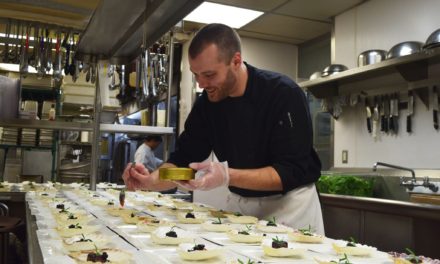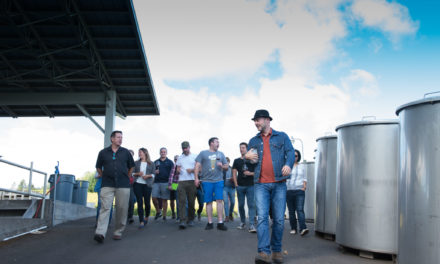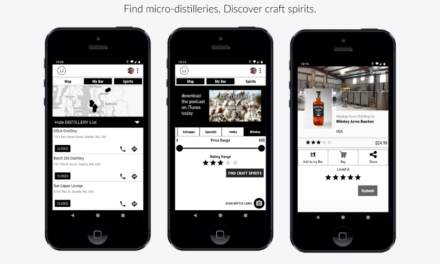(As told to Julie Fadda, Darlene Hayes, Robin Shreeves, Jeff Siegel,
Margarett Waterbury, Ken Weaver, and Kathleen Willcox)
Life is a learning curve, full of unforeseen challenges and unexpected victories. Spirited asked alcohol industry professional to tell us about a mistake they made or problem they discovered at some point in their career, how they addressed it, and what it taught them.
Paul Allen and Betsey Dahlberg
Hope Springs Distillery; Lilburn, Ga.
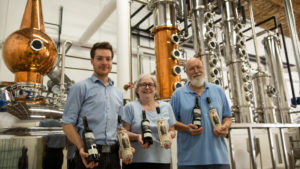
Hope Springs Distillery team
We were on the verge of retirement when we decided to flip our hobby of home-brewing beer and fermenting wine into a brand new career by opening our very own distillery. We had passion and drive, but ran into many unforeseen challenges. The most glaring of all was the list of unfamiliar regulations attached to the industry.
The best advice we can give to entrepreneurs beginning their distilling journey is to seek partnerships with a wide range of industry professionals, from master distillers to engineers to well-versed lawyers who can interpret complicated regulations. While starting a business is exciting, it’s always helpful to slow down and listen to advice from those that have been there before. —Kathleen Willcox
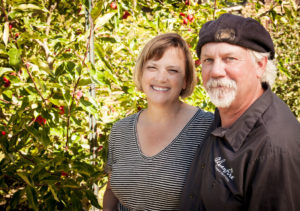
Bear Bishop, Alpenfire Ciderworks
Steve “Bear” Bishop
Alpenfire Ciderworks; Port Townsend, Wash.
Bear and his wife, Nancy, started out fermenting the only apple variety they had available, Red Delicious. “It was a fragrant, bone dry, sparkly acid trip we were happy enough with,” he says. Proud of their first cider attempts, they invited friends over to share, and they loved it—or so they said. “Later, we saw it was being dumped in the flower beds as they went back to drinking pilsners. A few days later, we noticed the weeds were dead. But that’s another story.”
The Bishops went on to plant a cider orchard of bittersweet and bittersharp apples and now have one of the most well respected cider companies in the Pacific Northwest.
Lesson learned? “Without good fruit you don’t have good cider…or good friends!” —Darlene Hayes
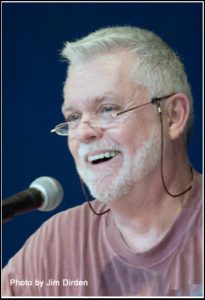
John Bratcher, McPherson Cellars
John Bratcher
McPherson Cellars; Lubbock, Texas
Today, rosé from McPherson Cellars is an established best seller and an award winner. But in the couple of years before the rosé craze started, “We made more dry rosé than anyone in Texas could buy, even if it had been popular,” says John Bratcher, who’s been a retailer, a wine broker, and run the sales departments of three Texas wineries. “So we were stuck with a backlog of rosé.”
The lesson? “Don’t make wine because you like to make it,” says Bratcher. “Make wine because you can sell it. The point isn’t that we shouldn’t have made rosé, but that we should have been more realistic about the market and what the market wanted. The upside was, we were ready when the market was ready, so we didn’t have to play catch up.” —Jeff Siegel
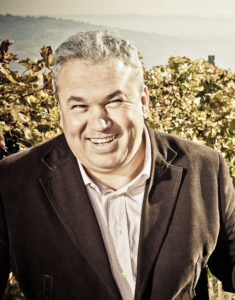 Armando Castagnedi
Armando Castagnedi
Tenuto Sant’Antonio; Verona, Italy
When you start a new adventure without experience, you have to lean on someone. In our case, it was consultants. At the beginning, our wines had a traditional style but after a few years we defined our own style, and then we were satisfied with the results. We decided to harvest in advance to ensure more acidity and less concentration of sugar. We also learned that it’s important to press the grapes earlier to obtain wines that are more balanced and with fresh fruit notes.
To achieve the results we wanted, it took about five years, during which we experimented with harvest timing, vinification methods, and types of barrels. At the beginning, we used 25 hl Slavonian oak, but after having tasted other Valpolicella wines aged in French oak, we realized this kind of wood gives more elegance and finesse. So we decided to switch to 5 hl French oak tonneaux, a good compromise between a big barrel that needs more time for aging and a barrique that’s more aggressive. —Willcox
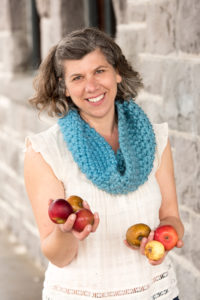 Ellen Cavalli
Ellen Cavalli
Tilted Shed Ciderworks; Windsor, Calif.
One thing that’s been a success that started as a problem was our space configuration. We started out with a really teeny-tiny tasting room because our space also serves as our production area. When we moved in, we were really thinking primarily in terms of production needs: ‘We need space to bring in bins and a forklift and our tanks and barrels.’ The tasting room was almost an afterthought.
A too-tight fit for guests was alleviated by knocking out a wall, putting in a sliding barn door between the production and tasting-room areas, and making most things collapsible or on casters for better optimization of the limited square footage. Literally knocking down the barrier between production and tasting, and opening that space up, has been a real boon to our guest experience as well as to our sales.
Also related to this, we started out as by appointment only, and then were erratic when we finally decided to open one day per week. We ran it ourselves and couldn’t always be onsite for family or other obligations, so would cancel tasting room hours sometimes haphazardly. For the past couple of years, we’ve had a regular schedule because we hired someone to run the tasting room, and that’s resulted in exponentially better sales. It took us a while to fully understand that we aren’t just in the cider business, but also in the hospitality business. It pays to be predictable and work to create a convivial, accommodating space. —Ken Weaver
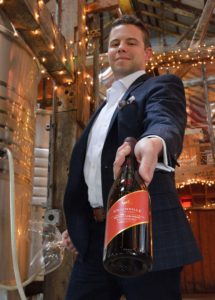
John Cifelli, Unionville Vineyards
John Cifelli
Unionville Vineyards; Ringoes, N.J.
In 2016, we were in a state of flux, as we’d hired a new general manager, winemaker, and vineyard manager at the same time. We were all climbing learning curves individually and together.
With more than 50 acres under vine at five sites across three counties—a rarity for East Coast wineries—we weren’t adequately prepared to handle all the farming challenges. We struggled with weed management, over-cropped some varieties, and ended with a smaller yield the following year. Although quality was good, we missed the full advantage of an excellent growing season. To see yields rebound, we made some minor soil corrections in 2018. The unpredictable warm, wet weather caused voracious vine growth.
Now, we have a more acute understanding and awareness of vine balance, both on a vineyard-wide and a plant-by-plant basis. We’re confident that for 2019, we’re equipped to have our best year ever—assuming the weather cooperates. We’ve learned farming is more than following a schedule or routine. It’s constant care, attention, and scouting. Most important, it’s anticipating challenges. —Robin Shreeves
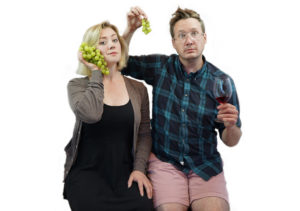
Jim Fischer and Jenny Mossbacher, Fossil & Fawn
Jim Fischer
Fossil & Fawn; Portland, Ore.
After harvesting some pinot gris from his family’s Silvershot Vineyard in 2014, Fossil & Fawn winemakers Jim Fischer and Jenny Mosbacher set aside a portion they thought their landlord, another winemaker, wanted to buy. Several days later, they asked him how that gris was coming along. “He went blink-blink, blink-blink,” says Fischer.
Not only had he not ordered the grapes, he hadn’t even known they were there. The fermenter full of destemmed fruit had been totally unattended—no punchdowns, no inoculation, no sulfur. “We thought we’d take off the cover and it would be ruined,” he remembers. “Instead, it was alive, smelled amazing, and ended up being the best ferment in the whole cellar that vintage.”
Fossil & Fawn hasn’t added sulfur at the destemmer since. “It taught us we could not only make funky, weird wines without sulfur; we could also make clean, terroir-driven, varietal wines without sulfur.” —Margarett Waterbury
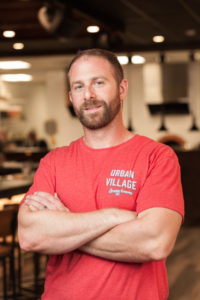 Dave Goldman
Dave Goldman
Urban Village Brewing Co.; Philadelphia, Pa.
I love to use unique grain bills, but that doesn’t always go as I would hope. I recently made a Roggenbier, which is nearly half rye malt. That grain bill led to a stuck mash that took hours to get into the kettle and was a completely miserable experience. A couple lessons were learned that day:
- Don’t make a Roggenbier ever again.
- You can never use enough rice hulls when using Rye Malts. —Willcox

Seth Klann, Mecca Grade Estate Malt
Seth Klann
Mecca Grade Estate Malt; Portland, Ore.
Eighth-generation grain grower Seth Klann couldn’t figure out why his conveyor-powered prototype malter made great-tasting malt but had low friability. “It didn’t make a lot of sense,” says Klann. “I was banging my head against the wall trying to figure out what was going on.”
A 1980s white paper from Coors provided a hint. It, too, had tried conveyor belt malting, but found the constant tumbling resulted in a phenomenon called “case hardening”: “It’s an unsexy term, but we’re basically making the malting equivalent of burnt ends on barbecue,” explains KLann. “We’ve turned our kiln into a rotisserie.”
Friability figures aside, the extra melanoidin formation gave Mecca Grade Malt a unique flavor that brewers loved. So instead of fixing the issue, it’s embraced it. “We just have to convey that it’s a little tougher to break apart those hard ends, but that’s where all the sweetness is.” —Waterbury
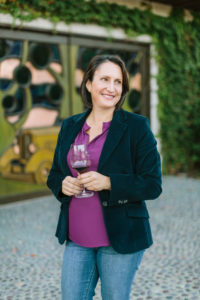 Ana Keller
Ana Keller
Keller Estate; Petaluma, Calif.
One year, we had extra syrah. We kept it in the barrels until the following year—when we had extra syrah again. We decided to combine them and bottle the result as a non-vintage syrah—and we immediately learned that the market hates non-vintage wines. As in, there’s nothing it hates more. Coupled with the fact that syrah is a difficult varietal to sell in the first place, the situation posed a unique problem, but a solution soon arose.
One of the vintages made up 85 percent of the wine, so we relabeled all 400 cases with that year—and it sold.
Lesson: You can’t correct two little problems by combining them and creating one big problem.
Today, the winery co-ferments its cool-climate syrah with viognier, Cote-Rotie style. We’re really happy with it, and it’s what the market wants. —Julie Fadda
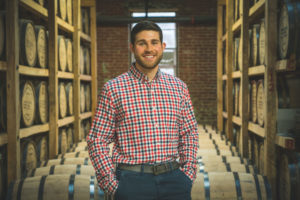 Caleb Kilburn
Caleb Kilburn
Kentucky Peerless Distilling Co.; Louisville, Ky.
One of the most interesting mistakes I’ve made was a product of my trusting nature and naivety. Early on, I made the false assumption that someone who holds a title in a profession is a most definitely capable of handling tasks associated with that type of work.
When we were in the final stages of getting Peerless up and ready to run, we discovered a number of mistakes had been made between the electrical engineer and the system integrator. They were responsible for delivering a fully functional and innovative controls system that would aid our distillers, but the system contained too many bugs to be effective. These weren’t malicious errors and those responsible weren’t indifferent towards them, but they simply lacked the relevant skills to efficiently correct them.
Since they were my last layer of support, I decided to educate myself on the programming software and try to correct it myself. I attended a two-hour educational seminar offered by Siemens, leaned on their technical support for advice, and then managed to finish programming the computer system myself. The resulting system has let our cookers and distillers craft award-winning whiskey. From the experience, I learned two things: To never blindly trust what someone else should do and to never doubt what I can do. —Willcox
Eleanor Leger
Eden Specialty Ciders; Newport, Vt.
There’s a saying that the three most important factors in real estate are location, location, and location. It turns out, the same might be said for a beverage business. “When we first started out, our first production facility was at our farm in rural northern Vermont, a fabulous location for growing apples and making cider, but a challenge for other things, like distribution,” explains Leger, co-founder/owner of Eden Ciders (with her husband Albert).
“We eventually moved some of our production to the nearest town, Newport, and opened a tasting room. While it’s a popular resort area, it’s more of just a summer destination. We’ve recently opened a second tasting room in Winooski, just outside Burlington, Vermont’s largest city. It’s in an area with a growing arts scene and near the university, and it’s been great. If we were starting out today, I would choose a location closer to a major population center and with a good traffic pattern.” —Hayes
Jake Mann
Five Mile Orchards; Watsonville, Calif.
The jury is still out as to whether Mann’s decision to join his family’s more than 125-year-old apple business, Five Mile Orchards in Watsonville, Calif., and pivot it to supply the growing hard cider industry was a mistake.
“I wonder what my grandfather would say about our business’s outlook today: super-variable yields, thin margins, borderline chill hours, heat waves,” says Mann. “There was a feeling of stepping onto a moving train when I got back into it, becoming the new caretaker for this period of time. I think no one wants to be the last guy on the timeline; the one who goes broke and hangs up the apple operation.
“We irrigated in January that first year; seemed like a bad omen. That being said, 2016 and 2018 were huge harvests, and my family’s long history in the area and the durability of the old trees renews my feeling that this maybe isn’t a mistake.” —Hayes
Jon McPherson
South Coast Winery Resort & Spa; Temecula, Calif.
What happens when the yeast in a methode champenoise tirage doesn’t do what it’s supposed to do? This happened to long-time California winemaker McPherson in the early 1990s, and the yeast quit working about one-third of the way through the process.
“That’s when you dump all the wine out of the bottles, all 8,000 cases, recombine it, pour it back in the bottles, and do tirage all over again. What I learned there was never take yeast for granted,” he says. “You can run all the tests on it, you can do all the lab work, and people can do all the studies. But occasionally, this sort of thing will happen, and you have to be ready with a plan to fix it.” —Jeff Siegel
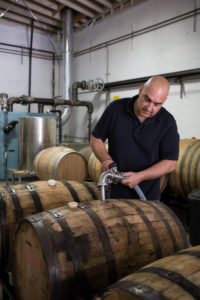 Lee Medoff
Lee Medoff
Bull Run Distilling Co.; Portland, Ore.
During one harvest while working at McMenamins Edgefield in Troutdale, Ore., Medoff (now founder and distiller at Bull Run Distillery) put 15 tons of fermenting pear pulp into the last remaining vessel: an ambient temperature, 3,000-gallon outdoor tank.
“Everything that could go wrong, did,” says Medoff. “It had terrible reduction.” Distillation didn’t help. “Like you’d sliced an onion open,” he laughs. “No pear character at all.” At a loss, he filled it into puncheon and hid it deep in the cellar. Out of sight, out of mind.
A decade later, McMenamins called Medoff asking what this delicious spirit in the huge barrel could be. To his surprise, the aged brandy had turned out great. “It opened my eyes to the fact that enough time in a barrel will fix about anything,” he says. And that chalk on a barrelhead isn’t a great record keeping system. —Waterbury

Bill Rich
Bill Rich (retired)
Distributors make thousands of decisions every year about adding wines, and the goal is to use the best information to make the best decision. But that didn’t happen in the late 1990s, when Rich worked for one of the country’s biggest wholesalers in the fine wine division. One Friday each month, his group would taste a couple of dozen wines at the end of a long day of meetings to decide whether to distribute them.
“We called these tastings the ‘orphans,’ as they were all looking for a home,” he remembers. Worse, he adds, “The vice president of the division made us taste them all—red and white—at room temperature.”
On this Friday, says Rich, who’s also been a wine broker and retailer, they tasted a French chardonnay with a nontraditional name. It was late, they wanted to go home, “and most of us thought the name was stupid and that consumers would think so, too.”
The wine was Fat Bastard chardonnay, which not only became a national best seller but ushered in the era of edgy wine names. “Buy wine not because you think it’s a good idea, but because the customer will buy it,” says Rich. “Don’t let your preconceived notions get in the way.” —Siegel
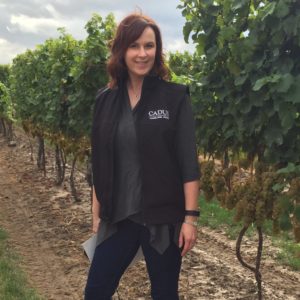
Gina Shay, Petraea Plus
Gina Shay
Petraea Plus; Lakeville, Mich.
One of my biggest mistakes has been sticking with a manufacturer I couldn’t trust, for longer than I should have, because they make a neat product. I believed in the product’s potential so much that I kept giving the manufacturer chances to improve even after consistently broken promises and some business practices that seemed downright shady.
I finally cut the ties. Having that cool product in my portfolio wasn’t worth the inconvenience the company caused my customers or the constant damage control I had to do on their behalf, all while risking my reputation and credibility in the process. Knowing when to cut your losses and move on is just as important in business as it is in life. —Shreeves
 Ron Silberstein
Ron Silberstein
Admiral Maltings; Alameda, Calif.
Admiral Maltings ran into major space constraints when getting its malting facility up and running. “From a production standpoint, we undersized our floor,” explains Silberstein. “Even with our radiant-cooled floor, we could only do 7.5 tons on the floor instead of our originally designed 10 tons. We’re producing 25 percent less than the malthouse was designed for—which, basically, is all bottom line.” Which meant it was time for earlier-than-expected moves. “We put ourselves in a situation where we actually had to expand capacity before we were even at capacity, because we just wouldn’t be able to break even otherwise.” They’re at work on a third germination floor. “We always planned on being able to have a Phase 2 in our growth—it’s just coming earlier than we expected.” —Weaver
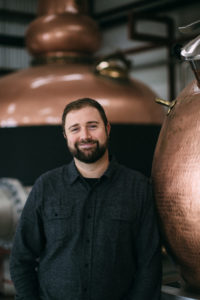 Adam Spiegel
Adam Spiegel
Sonoma Distilling Co.; Rohnert Park, Calif.
Managing cash flow is one of the most important parts of running any business, and credit cards are a very expensive form of debt. This may seem obvious, but as producers and artisans, many of us in this industry—whether distillers, brewers, or winemakers—can too easily set aside some of the core business fundamentals in pursuit of our deep passion for the craft. Asking good questions, taking time to understand the details, and building financial projections is incredibly important.
I ran my business the wrong way for the first five years before I learned from my new business partner how to create and maintain proper cash projections. Four years later, I understand my business process and flow better than ever before and find even greater satisfaction in seeing this dream of crafting and sharing fine California whiskey come to life! —Willcox
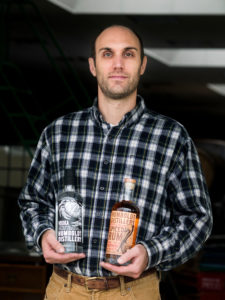 Abe Stevens
Abe Stevens
Humboldt Distillery; Fortuna, Calif.
“One of the biggest mistakes many distillers and their distributors make is overlooking the everyday liquor stores and basic neighborhood bars. Focus tends to be exclusively on high-end craft cocktail bars and fine wine and spirits shops, in hopes that a product’s reputation is elevated by association. But if you’re producing a quality spirit, there’s no need for that level of exclusivity. The goal should be to get your products in front of the largest possible audience. Consumers in their local barrooms are also interested in new brands, and there’s often less competition from other specialty producers. There’s an opportunity to shine brighter in a dimly lit dive bar—often moreso than in a saturated, upscale establishment.” —Willcox
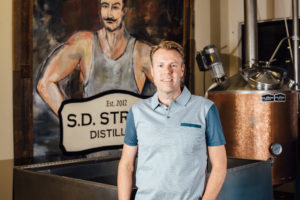 Steve Strong
Steve Strong
S.D. Strong Distilling; Parkville, Mo.
“As a true start-up, we’ve had our share of mishaps, however, I always view these as a learning experience. In the beginning, we probably had four or five batches of product labels come in with mistakes. A big “groan moment” when this happened—expense and time wasted because we missed relooking at the proof for the sixth time or something of that nature. Now we have several people review the label proof each time prior to print. As owner and head distiller, it’s important to me to get the details right, as I have my name on every bottle that goes out the door. “ —Willcox
 Jeremy Warren
Jeremy Warren
Revision Brewing Co.; Sparks, Nev.
Warren’s favorite mistake stems from his days at Knee Deep Brewing (Auburn, Calif.), when a mix-up with a yeast supplier resulted in a swapped yeast strain. “We grabbed the wrong yeast, and we fermented the Hoptologist with a Belgian yeast strain.”
Brewing friends thought the mistake turned out well, though. “We entered it in that year’s Great American Beer Fest and actually won a silver medal in the American-Belgo category.” But it was also a wake-up call to improve core procedures. “Obviously we needed to step back and say, ‘Well, this could have been costly. We could’ve been dumping a batch when we couldn’t afford to dump a batch.’”
On current policies at Revision: “Our standard operating procedures book is really heavy. Nowadays, if we were to add the wrong yeast strain to some of our hazy beers, I don’t think we’d be quite as lucky on the outcome.” —Weaver
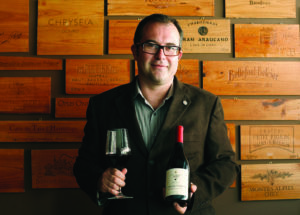
Keith Wallace, Wine School of Philadelphia
Keith Wallace
Wine School of Philadelphia; Philadelphia, Penn.
The first big error I made in my career was not disclosing a physical handicap to the owner of the winery I was working at. The second big error was one of judgment. Back in 2000, I changed the focus on our merlot program from big but simple flavors to a more nuanced style. The fruit we had was amazing, I could coax out delicate terroir-driven flavors from that particular vineyard. The boss hated the wines, and even though I earned some great numbers—91 from Robert Parker and a 90 from Wine Spectator—the wine sold less units that vintage. I didn’t stay long in that position, but I did learn an essential lesson: Never make a wine unless it can find an audience. —Willcox























